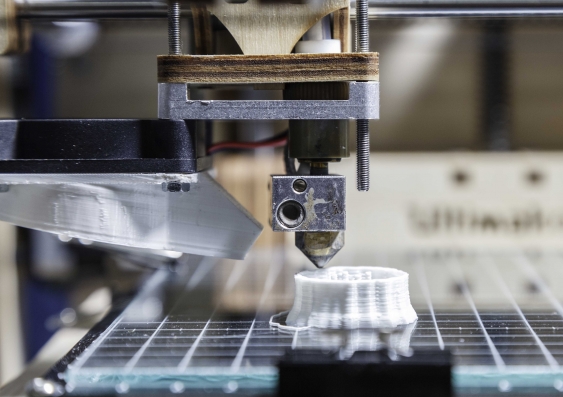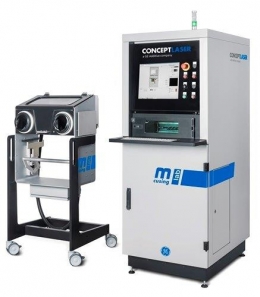UNSW students get the scoop on world-leading 3D printing technology from GE
UNSW is the only institution in Australia to be selected by GE to receive a sophisticated metal 3D printing machine.
UNSW is the only institution in Australia to be selected by GE to receive a sophisticated metal 3D printing machine.

Clare Morgan
UNSW Media & Content
(02) 9385 8920
clare.morgan@unsw.edu.au
UNSW Sydney students and staff have been handed a unique opportunity to help further develop the application of additive manufacturing, otherwise known as 3D printing, with the arrival of a sophisticated metal 3D printing machine under an initiative by global digital industrial company GE.
The company’s GE Additive division will formally unveil the $350,000 Concept Laser Mlab Cusing 200R machine at UNSW’s School of Mechanical and Manufacturing Engineering (MME) on Monday afternoon.
GE is investing $US10 million globally over the next five years to create a pipeline of additive manufacturing experts to accelerate advanced manufacturing under its Additive Education Program. A hand-picked team of GE specialists evaluated and selected eight universities to receive the 3D printing equipment, with UNSW the only recipient outside the United States.
At the unveiling, GE’s Chief Executive Officer for Australia Max York, General Manager for Global Sales at GE Additive Tom Gleeson, and Engineering Integration Leader Chris Schuppe will be joined by UNSW Deputy Vice-Chancellor Enterprise Professor Brian Boyle, Dean of UNSW Engineering Professor Mark Hoffman, and Head of School of Mechanical and Manufacturing Engineering Professor Chun Wang.
“This is a wonderful opportunity for GE to partner with UNSW and continue to grow the design possibilities for Australian engineers,” said York, adding that “this collaboration will help UNSW and GE to take the lead in fostering the next generation of additive manufacturing technology in Australia”.
Gleeson said: “That UNSW would be selected from 250 college and university applications under the GE Additive Education Program worldwide shows that Australian university students are punching above their weight when it comes to advancements in additive manufacturing.”

GE's Concept Laser Mlab Cusing 200R machine. Photo: Supplied
Wang said the new Concept Laser Mlab Cusing 200R machine would greatly enhance the education and research in additive manufacturing at UNSW.
“Students will be able to use this machine in a newly created course in additive manufacturing technology. In research, this machine will enable collaborative research between Engineering and Medicine to develop novel spinal fusion devices to overcome the current clinical problem of poor bone ingrowth into fusion devices, for example,” he said.
“UNSW is also teaming up with a research team from Stanford University to develop in-situ characterisation of microscopic defects in additive manufacturing.”
UNSW was honoured to receive the machine, Professor Wang said, especially considering GE’s rigorous selection process.
“MME has a great track record in additive manufacturing research and a strong vision of future research associated with a manufacturing process that will both disrupt and complement traditional manufacturing processes,” he said.
Boyle said: “The development of this kind of technology has created huge potential for the manufacture of a wide range of components and devices in different industries and UNSW is pleased to be able to work with GE in this rapidly expanding field.”
The Concept Laser Mlab Cusing 200R machine is a laser powder-bed fusion system designed to manufacture metal components with elaborate structures and parts made from reactive materials like titanium. It is ideally suited to fine detail, high-quality surface finish, and precision component structures. It will be used for the following research areas at the frontier of additive manufacturing: